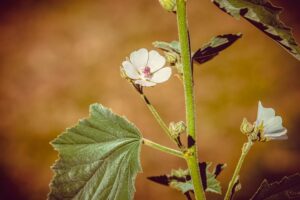Soap plants are a natural answer to cleaning without using harsh chemical soaps that are not biodegradable. They are also easy to grow and abundant.
Introduction
What makes a plant a soap plant? Soap plants are high in saponins are natural substances found in certain plants that behave similarly to soaps. They can be used for cleaning, laundry, and personal hygiene. The use of soap plants dates back centuries when people observed the cleansing properties of plant extracts. Now, it’s a popular alternative to chemical-based cleaners and is gaining more traction as people become more environmentally conscious. Before we understood how to make soap as we understand it today our ancestors discovered plants with saponins that they noticed made suds and could be used to clean. This article is about the various soap plants used by our ancestors and still used today in some parts of the world.
Types of Soap Plants
There are various types of soap plants from different parts of the world. Some of these plants have been used for centuries, while others are more recent discoveries.
Saponaria Officinalis (Soapwort)
Soapwort, scientifically known as Saponaria Officinalis, is a notable member of the soap plant family. This perennial plant is particularly rich in saponins, especially concentrated within its roots and leaves. When these parts of the plant are agitated in water, they produce a lather that is very similar to soap. Due to this characteristic, Soapwort has been traditionally used for soap-making, offering a natural and environmentally friendly alternative to synthetic detergents.
Quillaja Saponaria (Soapbark Tree)
The Soapbark Tree, known scientifically as Quillaja Saponaria, is another important member of the soap plant family. The inner bark of this tree is rich in saponins, the natural soap-forming component. When the inner bark is exposed to water and agitated, it creates a froth similar to the lather produced by conventional soaps. Traditionally, it has been used to make soaps and shampoos, providing a natural and eco-friendly alternative to chemical-based hygiene products.
Sapindus Mukorossi (Soapnut)
Soapnut, known scientifically as Sapindus Mukorossi, is yet another key member of the soap plant family. The dried fruit rind of this plant is abundant in saponins, a natural soap-forming compound. When this rind comes into contact with water, it forms a soapy foam, similar to the lather produced by regular soap. This characteristic has led to its extensive use as a soap substitute for centuries. It offers a natural, eco-friendly alternative to synthetic soaps, bringing us closer to nature while ensuring our hygiene.
Yucca Glauca (Soapweed Yucca)
The Soapweed Yucca, known scientifically as Yucca Glauca, is one more significant member of the soap plant family. The roots and leaves of this plant are rich in saponins, a natural soap-forming compound. When these parts of the plant come into contact with water, a soap-like foam is produced, reminiscent of the lather typically formed by conventional soap. Native Americans have traditionally used the roots and leaves of this plant for soap and shampoo, providing a natural and environmentally friendly solution for personal hygiene. This use underscores the remarkable symbiosis between humans and nature, where nature offers a sustainable alternative to synthetic detergents, and humans ensure the preservation of these natural resources.
Althaea Officinalis (Marshmallow Plant)
Another plant with soap-like properties is the Marshmallow Plant, known scientifically as Althaea Officinalis. Despite not being widely recognized for its soap characteristics, the root of the marshmallow plant has been historically used as a gentle soap alternative. The root is abundant in mucilage, a sticky substance that when mixed with water, forms a soft, lathering texture, similar to the foam generated by conventional soap. This plant again showcases nature’s ability to offer simple, eco-friendly solutions to meet our hygiene needs, further strengthening the bond between humans and the environment.
Chenopodium Quinoa (Quinoa)
The Quinoa plant, scientifically known as Chenopodium Quinoa, is another fascinating entry in the world of natural soaps. Predominantly known for its nutritious seeds, Quinoa also houses saponins in its leaves and stems that have soap-like properties. When these parts of the plant are combined with water, they produce a lather similar to traditional soap. Indigenous societies in South America, where the plant originates, have long recognized and utilized these properties for cleaning purposes. This further underscores the concept of sustainable living, showcasing how nature can present alternatives to synthetic products in unexpected places, and how these alternatives can be leveraged to promote healthier lifestyles and a cleaner environment.
Use: Quinoa saponins located in the seed coat can be used as a soap substitute. This is why you must rinse quinoa well before cooking. But instead of discarding that water use it to wash something.
Conclusion
Each of these plants can be used for soap by soaking, boiling, or agitating the plant parts that contain saponins in water. The resulting liquid can then be used as a soap or shampoo substitute. Always remember to properly identify the plant and use it respectfully and sustainably.


